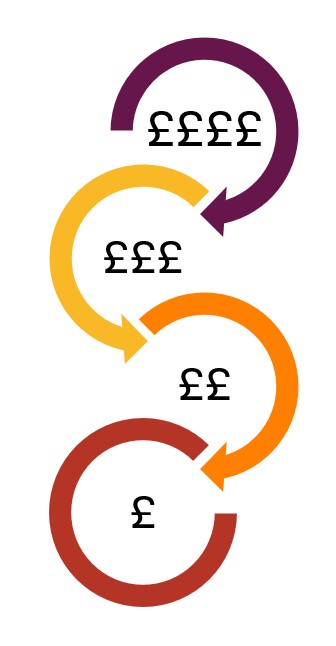It’s Annual Vendor Negotiation (AVN) time of year, and many vendors will now have understood Amazon’s ask. We are supporting a number of clients through the process this year we have been struck afresh by the increase in margin being requested and the unintended consequences that can result.
Many vendors approach the ask by considering whether they can afford it. However, the true question is whether a similar increase in terms can be accommodated next year and the year after. As an agency, we’ve been involved in this process for 12 years and we aren’t aware of a single vendor, no matter their scale or Net PPM, who wasn’t asked for an increase in terms each and every year.
There’s a principle of management called the Peter Principle, developed by Laurence J Peter (bear with us reader). This argues that employers evaluate their staff based on their skills and abilities in their current role. Based on these the employee may be promoted to a more senior role that requires different skills and abilities. The employer repeats the process until they are promoted into a role that their skills and abilities no longer match. They begin to fail…and they then either stay in this role, failing, or are removed. Both outcomes are unfortunate for both employer and employee. The win would have been knowing where to stop.
Vendor negotiations follow an equivalent process which we have observed time and again.
A downward spiral

A vendor has a top-performing, fast-selling product. Amazon see that their profit for the category would improve if they could increase the margin that they make on this product/all products from this vendor. A long negotiation follows. The vendor agrees that Amazon will be more motivated to support the product with discretionary placements and marketing effort if they are making more margin. They reach a compromise.
The next year Amazon come back for more, and a similar conversation takes place, resulting in further vendor margin erosion. The vendor now can’t afford to promote the product or spend quite so much on advertising, so the sales growth slows, but everyone feels this is the best compromise.
Then Amazon comes back for further terms enhancement. This time the vendor completes a full P&L, particularly on that top selling product, to make sure that they are clear on the implications of the negotiation. There’s now nowhere to hide. The vendor is barely making any money on the top seller. They switch all their promotion and advertising support to their B-tier products to try to shore up their Amazon business which was once a prized sales line, but is now a thorn in their side.
The final step is the negotiation where the vendor recognises and states plainly that Amazon’s margin must either stay still or go backwards for the relationship to continue. Amazon refuses to accept this. The client either delists the former top-seller or closes the whole account. This ends a previously profitable revenue source for both Amazon and the vendor.
The Results
Our smaller clients have frequently benefited from this cycle. By working slightly below the radar and keeping their product costs and terms carefully aligned they have been able, over time, to outlast their faster selling competitors until they have risen to the top of the heap. These vendors remain able to support their full product range with advertising and promotions and can continue to deliver profitable growth.
Our top-selling clients, however, regularly come under the kind of pressure we have described. Those who have been prepared to draw a firm line and hold to it during these AVN negotiations have done best. They have managed, with our support, to ensure that all terms improvements relate to operational efficiency.
Our advice? Be clear on your Amazon costs and opportunities. Be clear with Amazon what’s at risk when costs and opportunities are out of balance for your business. And before you sign this year’s agreement, make sure you’ve considered how next year’s negotiation might play out.